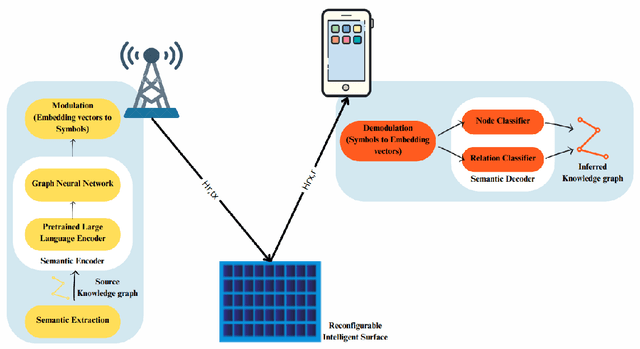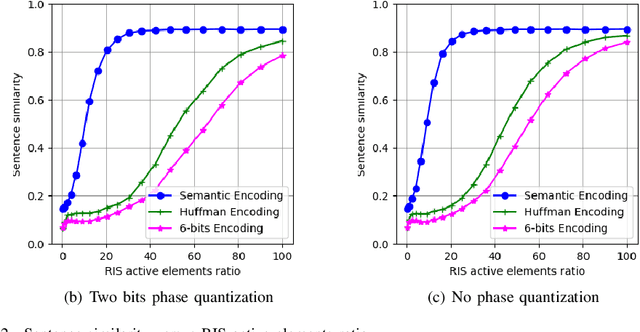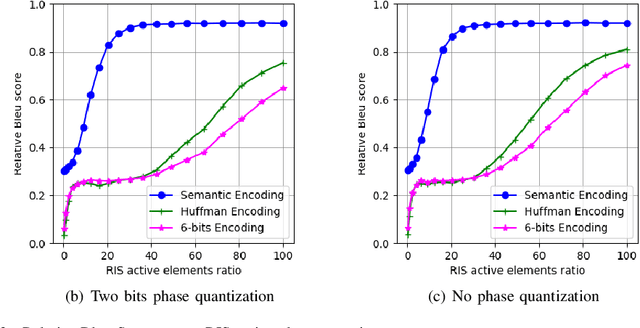Nour Hello
Optimizing RIS Impairments through Semantic Communication
Oct 10, 2024



Abstract:This paper investigates how semantic communication can effectively influence and potentially redefine the limitations imposed by physical layer settings. Reconfigurable Intelligent Surfaces (RIS) enable the intelligent configuration of the physical layer of communication systems. However, its practical implementation is hampered by several limitations. The Semantic Communication (SemCom) paradigm introduces additional degrees of freedom that can be exploited to improve the robustness of communication against physical layer impairments. In essence, SemCom ensures that the data representation remains robust even under adverse physical conditions by emphasizing the transmission of meaningful information in a manner that is less susceptible to degradation. Through the use of SemCom, potential RIS gains are demonstrated in terms of RIS area size and the phase shift precision of its active elements.
Semantic Communication Enhanced by Knowledge Graph Representation Learning
Jul 27, 2024



Abstract:This paper investigates the advantages of representing and processing semantic knowledge extracted into graphs within the emerging paradigm of semantic communications. The proposed approach leverages semantic and pragmatic aspects, incorporating recent advances on large language models (LLMs) to achieve compact representations of knowledge to be processed and exchanged between intelligent agents. This is accomplished by using the cascade of LLMs and graph neural networks (GNNs) as semantic encoders, where information to be shared is selected to be meaningful at the receiver. The embedding vectors produced by the proposed semantic encoder represent information in the form of triplets: nodes (semantic concepts entities), edges(relations between concepts), nodes. Thus, semantic information is associated with the representation of relationships among elements in the space of semantic concept abstractions. In this paper, we investigate the potential of achieving high compression rates in communication by incorporating relations that link elements within graph embeddings. We propose sending semantic symbols solely equivalent to node embeddings through the wireless channel and inferring the complete knowledge graph at the receiver. Numerical simulations illustrate the effectiveness of leveraging knowledge graphs to semantically compress and transmit information.
 Add to Chrome
Add to Chrome Add to Firefox
Add to Firefox Add to Edge
Add to Edge